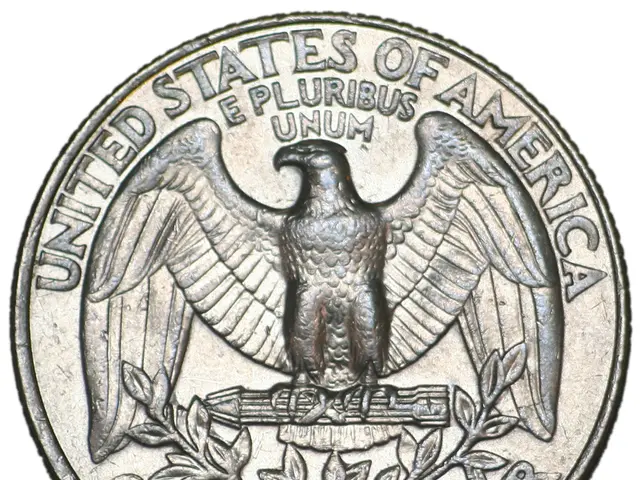Significant Decline in Extreme Poverty Rates in India: 2025 Reports Reveal
Title: India's Staggering Progress in Poverty Reduction: A Detailed AnalysisAuthor: Figen SekinCategories: Social and Cultural Values, EconomicsDate: March 19, 2025Comments: 0
India's incredible stride towards poverty elimination has stolen the spotlight in recent years. New research suggests that the country's extreme poverty rate has plummeted to near negligible levels, with rates below 5% in 2024 - a remarkable achievement for a nation with such a vast population.
The idea that development in densely populated, low-income countries is inherently slow seems to falter when we take a closer look at India's recent growth. The widespread belief was partially fueled by the complexity of scaling interventions and the sheer scale of poverty. But these statistics suggest otherwise.
Let's delve deeper and take stock of the latest findings while keeping in mind that there are debates around how poverty should be measured.
Current Poverty Levels in India
In a groundbreaking report, the State Bank of India revealed that the national poverty rate has fallen below 5%, specifically ranging between 4-4.5%. Here's a breakdown of the figures:
- Rural India: 4.86%
- Urban India: 4.09%
These figures mark a significant decline compared to previous years, with rural poverty dropping from 25.7% in FY12 to a staggering low of 4.86% in FY24, and urban poverty decreasing from 13.7% in FY12 to 4.09% in FY24.
The poverty line for 2023-24 was set at Rs1,632 for rural areas and Rs1,944 for urban areas, adjusted for inflation based on the recommendations of the Suresh Tendulkar committee from 2011-12.
A fascinating insight from the Brookings article reveals that when using international poverty lines, the Headcount Poverty Ratio (HCR) for the PPP$ 1.9 poverty line (a common measure of extreme poverty) declined from 12.2% in 2011-12 to a shocking 2% in 2022-23. For the PPP$ 3.2 poverty line, the HCR dropped from 53.6% to 20.8% over the same period.
These astonishing statistics indicate that extreme poverty in India has all but disappeared, with the 2% HCR for PPP$ 1.9 in 2022-23 being a testament to this dramatically improved reality.
Historical Trends and Comparisons in Poverty Rates
Historical data sheds light on the decline in India's extreme poverty rate. According to Forbes India, using World Bank data and the $2.15 poverty line, India's extreme poverty rate has consistently decreased over the years, as shown in the table below:
This perspective provides context for the recent findings, illustrating a steady, downward trend with the most recent figures aligning with a near eradication of extreme poverty in India.
Policy Drivers and Economic Influences
The decline in poverty rates is attributed to a multitude of factors, including higher consumption growth among the bottom 5% of the population and substantial government support. Programs like the Ayushman Bharat Yojana for affordable healthcare, the Pradhan Mantri Bharatiya Janaushadhi Pariyojana, and various social welfare schemes have contributed to improved living conditions. Additionally, public initiatives such as the national mission for toilet construction, universal access to electricity, modern cooking fuel, and piped water have played a significant role. For instance, rural access to piped water has skyrocketed from 16.8% as of August 15, 2019, to a current level of 74.7%, potentially reducing sickness and boosting family incomes.
An unexpected detail is the impact of free food programs, not accounted for in official poverty statistics. It's said that approximately two-thirds of the population receive free wheat and rice, enhancing food security and likely further reducing effective poverty rates. Real per capita consumption growth since 2011-12 has been 2.9% per annum, with rural growth at 3.1% and urban at 2.6%, accompanied by declining inequality, as evidenced by the Gini coefficient dropping from 36.7 to 31.9 in urban areas and from 28.7 to 27.0 in rural areas.
Debates about Poverty Measurement
While the consensus is clear, some debate remains around the accuracy of measuring poverty. For instance, the India Forum highlights the need for caution in declaring extreme poverty rate elimination until unit-level data from the 2022-23 NSO survey is analyzed. The proximity to national elections has also fueled debates, with some questioning the timing and methodology of recent surveys, although a consistent trend has emerged across multiple sources.
Evolution of Poverty Measurement
Historically, poverty measurement in India was based on the Headcount Ratio, defined as the number of people living below a set poverty line. The poverty line was the cost of a minimum basket of goods required for a sustainable life. In the 2000s-2010s, the Tendulkar Committee and the Rangarajan Committee introduced updates to the methodology, focusing on the cost of a minimum basket of goods and services rather than just food. The World Bank has pivoted from a $2.15 per day threshold to a $3 daily threshold, incorporating 2021 Purchasing Power Parities (PPPs).
Future Outlook
While India has made exceptional progress, the journey is far from over. Projections indicate that the country's poverty rate could further decrease to 4.6% by 2024, thanks to continued economic growth and improved measurement techniques. The methodologies for measuring poverty and the effectiveness of policy interventions will continue to be subjects of ongoing debate and research. The future lies in building upon this remarkable progress to eradicate poverty in all its forms in India.
- The decrease in extreme poverty rates in India has been attributed to various factors, including the Ayushman Bharat Yojana for affordable healthcare, the Pradhan Mantri Bharatiya Janaushadhi Pariyojana, and government welfare schemes, as well as initiatives like the national mission for toilet construction and universal access to electricity.
- In addition to these government programs, many experts believe that free food programs have also played a significant role in reducing effective poverty rates in India.
- The decline in poverty rates has been further boosted by increased consumption growth among the bottom 5% of the population and improvements in sectors such as agriculture, education, health, and finance, all crucial for the overall development and prosperity of the nation's businesses and industry.






